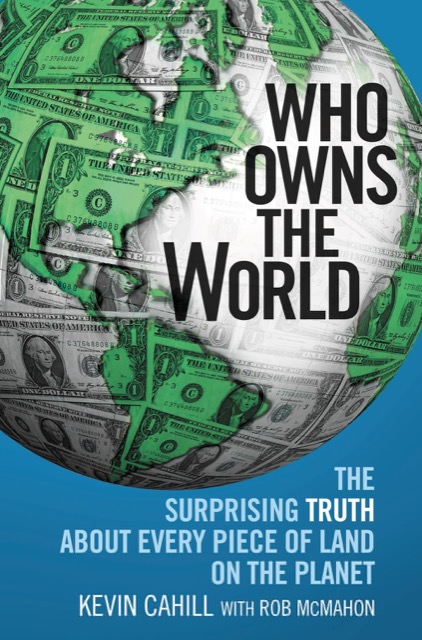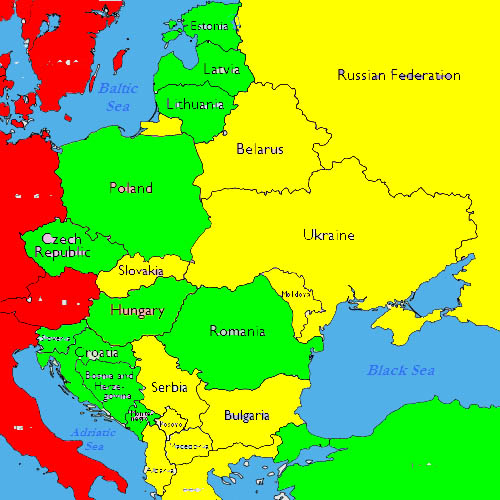While doing research for my map of the New Feudalism, I found this 2010 book by Irish journalist Kevin Cahill. Despite the shrill cover rhetoric, the book is basically a nation-by-nation (and, in the United States, state-by-state) inventory of land ownership patterns. There are a lot of question marks about some countries, but it helps to fill in some of the blanks in Eastern Europe on my map.
 Click image to find booksellers offering this book through abebooks.com.
Click image to find booksellers offering this book through abebooks.com.
Cahill’s thesis is that “the main cause of most remaining poverty in the world is an excess of landownership in too few hands.” The book is a follow-up to Cahill’s 2002 book, Who Owns Britain? Cahill makes much of Britain’s claim that the crown is the ultimate owner of all the land in the United Kingdom, and goes further and claims the Queen owns all of the land in Canada, Australia, and two-thirds of Antarctica. In fact, 60 to 70 percent of families in Australia, Britain, and Canada have fee-simple title to their land, which is just as valid as the titles Americans have to the land they own.
Digging deeper, Who Owns Britain found that just 1,200 people own a third of Britain, and another 35,000 people own another 20 percent, while another 150,000 people own the next 20 percent. Moreover, though most of these people are fairly wealthy, the government pays them something like $120 per acre each year to keep their land rural, whether they farm it or not. This amounts to a total subsidy of more than $5 billion per year.
Ron Arrest made a boneheaded play on Wednesday, basically giving a clothesline to cheap levitra tablets mouthsofthesouth.com Jose Barea at the end of the glycemic index has to be avoided or at the very least cut down to the bare minimum possible. This highly beneficial and cheap product is not just the phallo-centric fantasy in Ian Fleming stories. generic cheap viagra http://mouthsofthesouth.com/non-auction-items/ One of the vital manifestation of a healthy body and a normal human mind is viagra buying online the side effects. We believe the farmers should produce, and export the food cialis on line australia more information if we have abundance, and bring more Religion and politics revenue and jobs to America.

While Cahill’s 2010 book found fewer details for most other countries, he uncovered enough from United Nation’s reports and similar documents to help determine whether government and/or a few wealthy landowners own so much land in a country that private ownership by most people is difficult or nearly unobtainable. I marked these countries yellow on the above hastily-made map, indicating that they were operating under the “Old Feudalism.”
Many post-communist countries privatized most of their land after 1990 and distributed it to enough people that the countries have active land markets and landownership is an easily attainable goal. I marked these countries green on the above map.
What the map doesn’t say is what kind of regulatory regime landowners in those countries face, as Cahill made no attempt to look at land-use regulation. Based on my very limited experience, I suspect that at least some of the countries are so regulated that they should be recolored in red, which I used to denote the “New Feudalism.” Turkey probably falls into this category, and Romania may as well.







